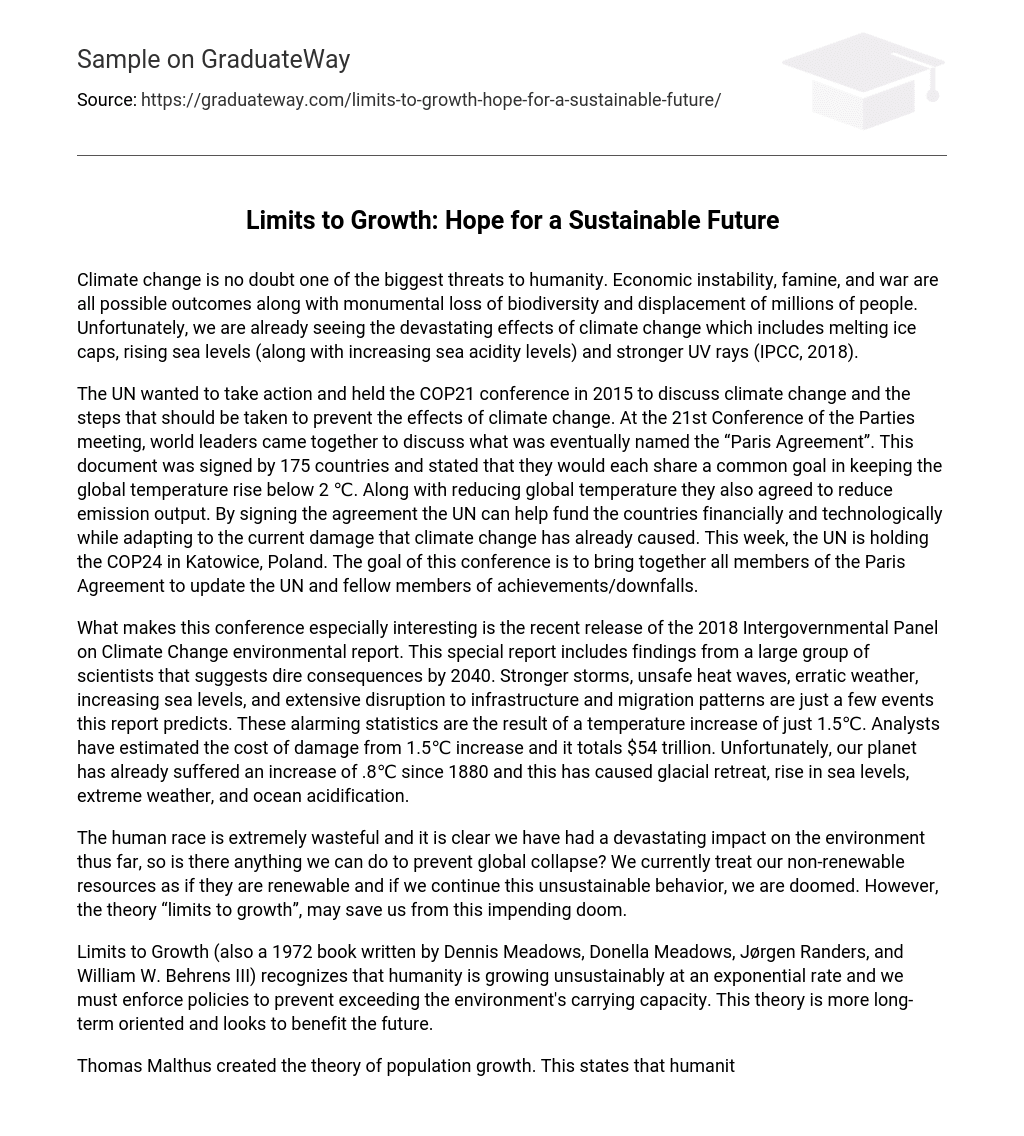Climate change is no doubt one of the biggest threats to humanity. Economic instability, famine, and war are all possible outcomes along with monumental loss of biodiversity and displacement of millions of people. Unfortunately, we are already seeing the devastating effects of climate change which includes melting ice caps, rising sea levels (along with increasing sea acidity levels) and stronger UV rays (IPCC, 2018).
The UN wanted to take action and held the COP21 conference in 2015 to discuss climate change and the steps that should be taken to prevent the effects of climate change. At the 21st Conference of the Parties meeting, world leaders came together to discuss what was eventually named the “Paris Agreement”. This document was signed by 175 countries and stated that they would each share a common goal in keeping the global temperature rise below 2 ℃. Along with reducing global temperature they also agreed to reduce emission output. By signing the agreement the UN can help fund the countries financially and technologically while adapting to the current damage that climate change has already caused. This week, the UN is holding the COP24 in Katowice, Poland. The goal of this conference is to bring together all members of the Paris Agreement to update the UN and fellow members of achievements/downfalls.
What makes this conference especially interesting is the recent release of the 2018 Intergovernmental Panel on Climate Change environmental report. This special report includes findings from a large group of scientists that suggests dire consequences by 2040. Stronger storms, unsafe heat waves, erratic weather, increasing sea levels, and extensive disruption to infrastructure and migration patterns are just a few events this report predicts. These alarming statistics are the result of a temperature increase of just 1.5℃. Analysts have estimated the cost of damage from 1.5℃ increase and it totals $54 trillion. Unfortunately, our planet has already suffered an increase of .8℃ since 1880 and this has caused glacial retreat, rise in sea levels, extreme weather, and ocean acidification.
The human race is extremely wasteful and it is clear we have had a devastating impact on the environment thus far, so is there anything we can do to prevent global collapse? We currently treat our non-renewable resources as if they are renewable and if we continue this unsustainable behavior, we are doomed. However, the theory “limits to growth”, may save us from this impending doom.
Limits to Growth (also a 1972 book written by Dennis Meadows, Donella Meadows, Jørgen Randers, and William W. Behrens III) recognizes that humanity is growing unsustainably at an exponential rate and we must enforce policies to prevent exceeding the environment’s carrying capacity. This theory is more long-term oriented and looks to benefit the future.
Thomas Malthus created the theory of population growth. This states that humanity will repopulate at an exceeding rate and will eventually cause the downfall of the human race. The Malthusian theory was published in 1798 and although he was proved wrong, (did not account for technological advances or vaccines) maybe one day he may be right. It is possible Malthus had a timeline issue and what he predicted will happen in the near future, or maybe history will repeat itself and we will come up with technology to reverse the damage already done. Either way, Malthusian theory was a huge contribution for limits to growth.
If we follow the limits to growth theory, it suggests that critical policy changes must be made in order to achieve global/environmental equilibrium. It would be highly unethical to demand everyone in the United States to stop having babies (and would cause a catastrophe). However, small policy changes such as using reusable bags instead of plastic bags at a grocery store is more ethical and would make an enormous positive impact. Offering more states the option to return plastic bottles and cans in for money, or allowing states to provide free/discounted birth control and birth control education to the population.
The list of opportunities is endless and obviously requires money, but we cannot ignore the fact that humanity would cease to exist if we keep heading in this direction. Everyday we dig ourselves deeper and deeper into a hole and we will never know when that hole is too deep to climb out of. Looking at the limits to growth theory we can better understand our environment and how all of humanity depends on each other to prolong their own life and the possibility of future generations.





